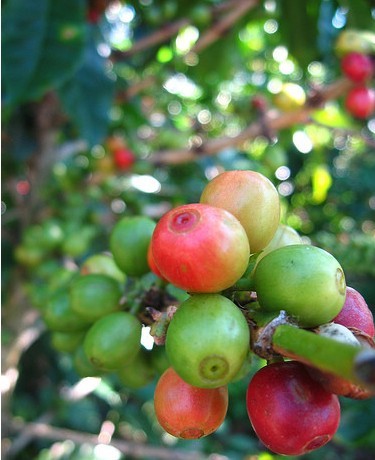Boutique coffee beans recommend Panamanian Rosa coffee
In the early years, the identification of top coffee mostly followed Japan, the king of coffee, the Blue Mountains of Jamaica and Kona, Hawaii, but with the continuous improvement of the standard of coffee-producing countries and the sharing of information, we were exposed to more high-quality coffee. This coffee bean Panama Rose Summer has become the new king of coffee in recent years.

The species of Geisha was discovered in the Rose Summer Forest of Ethiopia in 1931 and sent to the Coffee Institute in Kenya; it was introduced to Uganda and Tanzania in 1936, in Costa Rica in 1953, and Panama was introduced in the 1970s by Francesca of Dongba Seven Farm Garden. Mr. Serraxin got seeds from CATIE, Costa Rica, and started growing Rosa Coffee.
Geisha, sweeping the coffee world with the power of a hurricane, the coffee revolution is so fierce that the blue mountains of Jamaica and Kona of Hawaii, which have long occupied the throne of the coffee kingdom, have to stay away. This wild species, which originated in Ethiopia, is now widely used in major coffee producing areas after numerous battles, and its best spokesman is the "LaEsmeralda" estate from Panama.
History of Esmeralda Farm: Haines, a Swede in 1924. Elliott founded Esmeralda Farm, which was not a coffee grower but a ranch. Forty years later, Daniel Lou in 1964. Mr. Bidarson's grandfather, Luther Ruffer. Mr. Bidarson bought Esmeralda Farm in order to have an old home after retirement, grandfather Luthor. Mr. Bidasson was born in Sweden and was president of the Bank of America and director of United Nations Development.
His son, Mr. Bradesson, moved to Panama from California in 1973 and inherited his father's farm. He changed most of the farm to grow coffee in 1987 and invested in the machinery and equipment of refined coffee to start the brand in 1994. Brais. While Mr. Bidarson and his wife Susan started a formal business on the coffee farm, they also raised three children, Elligo (born in Philadelphia in 1966), Rachel (born in Sweden in 1967) and Danielu (born in Panama in 1974).
In 1996, Blaise and Rachel visited a farm for sale in the Haramijun area of the Bocketi Valley, and was attracted by the beautiful farm and immediately bought it. This is Esmeralda. Daniel Lou, the third son of Haramiqiong Farm. It is in this farm that Mr. Bidasson has grown Geisha coffee that attracts the attention of the coffee world.
The pronunciation of Geisha is the same as Japanese geisha, so it is also called geisha coffee. Because the tree species are taller than ordinary coffee trees, they are originally planted in a small area of the manor and are used as windbreaks. In order to take part in the annual competition for the best coffee in Panama, the son of the manor owner searched all the coffee trees in the manor for testing, so that Geisha had a chance to appear on the stage. Since then, he has also participated in various world coffee competitions, winning a total of 11 championships.
Important Notice :
前街咖啡 FrontStreet Coffee has moved to new addredd:
FrontStreet Coffee Address: 315,Donghua East Road,GuangZhou
Tel:020 38364473
- Prev

Coffee beans introduce Ethiopia Yejia Sheffield mocha
As the hometown of coffee, thousands of years of planting history and processing tradition in Ethiopia have created high-quality washed Arabica beans. Ethiopia's Yirgacheffe coffee is one of the most unique coffee beans in the world today: it has a strong aroma of flowers, lemon, strong acidity but soft and smooth taste.
- Next

General knowledge of Fine Coffee traditional Coffee drinking methods of 10 countries
A kind of coffee, different people have different ways to drink coffee, now let's take a look at how coffee is drunk all over the world. 1. Italy: it is a kind of espresso in a small cup, which can be cooked and drunk quickly. People who have been in contact with the coffee for a long time can get used to its heavy taste. 2. France: the French prefer light coffee, which is usually moderately roasted and roughly ground
Related
- Beginners will see the "Coffee pull flower" guide!
- What is the difference between ice blog purified milk and ordinary milk coffee?
- Why is the Philippines the largest producer of crops in Liberia?
- For coffee extraction, should the fine powder be retained?
- How does extracted espresso fill pressed powder? How much strength does it take to press the powder?
- How to make jasmine cold extract coffee? Is the jasmine + latte good?
- Will this little toy really make the coffee taste better? How does Lily Drip affect coffee extraction?
- Will the action of slapping the filter cup also affect coffee extraction?
- What's the difference between powder-to-water ratio and powder-to-liquid ratio?
- What is the Ethiopian local species? What does it have to do with Heirloom native species?

